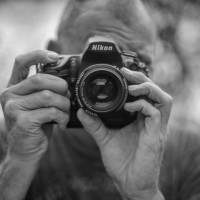SEARCH






|
|
|
|


by Yvette Depaepe
1x is proud to have many Aurora photographs taken by skilful members in it's gallery. They keep on coming till today. I discovered this stunning list of earlier published images made by Javier de la Torre.
Not that recent but surely more than worth to share with you today.
Everybody wants to see at least once in a life time the Aurora Borealis.
But what causes the Aurora Borealis and where can on see them?
The Aurora is an amazing light show caused by collisions between electrically charged particles released from the sun that enter the earth’s atmosphere and collide with gases such as oxygen and nitrogen. The lights are seen around the magnetic poles of the northern and southern hemispheres. Auroral displays can appear in many vivid colours, although green is the most common.
In North America, the north western parts of Canada, particularly the Yukon, Nunavut, Northwest Territories and Alaska are favourable. In Europe, Scandinavia, particularly the Lapland areas of Norway, Sweden and Finland is very good for aurora viewing. Iceland and the southern tip of Greenland are also good places.
Did you know that auroras are visible from space?
Satellites can take pictures of the aurora from Earth's orbit — and the images they get are pretty striking. In fact, auroras are bright enough that they show up strongly on the night side of the Earth.
Cameras see it better. Auroras are relatively dim, and the light is often at the limit of what human retinas can pick up. Cameras are often more sensitive, and with a long-exposure setting and a clear dark sky you can pick up some spectacular shots.
Legends about the Lights - "Northern Lights Center, Canada"
'Aurora borealis', the lights of the northern hemisphere, means 'dawn of the north'. 'Aurora australis' means 'dawn of the south'. In Roman myths, Aurora was the goddess of the dawn. Many cultural groups have legends about the lights. In medieval times, the occurences of auroral displays were seen as harbingers of war or famine. The Maori of New Zealand shared a belief with many northern people of Europe and North America that the lights were reflections from torches or campfires.
The Menominee Indians of Wisconsin believed that the lights indicated the location of manabai'wok (giants) who were the spirits of great hunters and fishermen. The Inuit of Alaska believed that the lights were the spirits of the animals they hunted. Other aboriginal peoples believed that the lights were the spirits of their people.
 | Write |
 | Clive Alcock Experiencing the dance of the the northern lights high is on my 'bucket list' of things really I must do.....the night sky like I have never seen it before. Thank you for an inspirational collection of beautiful photographs! |